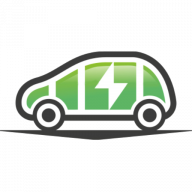You don't. Mine takes 5.1 seconds. I almost never use that. With the Tesla's design, it sort of comes with it. I do use that power not from dead stops but on the highway when passing etc. In fact, I would prefer to tune the car to give me more power at 60mph and less at 0, the electric motors naturally are best torque at 0.
What is silly is going to major lengths or cost or risk of going beyond the tolerances of the electrical code to get above 40a. If you had 2 cars, you might think about it, but frankly 40a is enough for 3 cars, because even though you might drive one car to empty 2 days in a row, you don't drive all 3 of them. Even 3 people who all have a 100 mile RT commute would only start to push a need over 40a.
What you learn when you charge with Level 1 (1.8kw 20a) as I did for 2 years is that it's no big whoop to not get to full. The bigger your battery, the less charging speed you need -- something that is counter to most people's intuitions -- because you can tolerate not getting to full for a few days. What mainly matters is are you charging long enough to do just a bit better than your average usage, because eventually you will get back up to full that way. Those very rare days it dips too low can mean a short supercharger visit.
Now don't get me wrong. This is what you *need*, it's a minimum, and it doesn't mean more isn't nicer and a bit more convenient. But it does mean you don't want to go nuts. It should never be necessary to do things like upgrade your panel and service to have an EV, though under today's electrical code you sometimes do. (In the future, we'll see cars and EVSEs designed to track the usage of other loads in the house, and moderate the car's demand, so that the car stops charging when the air conditioner, dryer and oven all go on in the middle of the night, which they don't.) If we get the electrical code to accept that, there's plenty of power to charge your car.
Many people don’t seem to get this, but I agree completely. I can see the fun of quick 0-60 sprints, but what is “fun” about your car finishing its overnight charge in 1 hour instead of 3 hours?
BTW, in Europe EVSEs are commonly available that monitor home useage and modulate the current available to the car to use the max capacity of their mains fuse without exceeding it. Here in North America, I am not aware of any option besides using Open EVSE to build and program your own.
GSP



